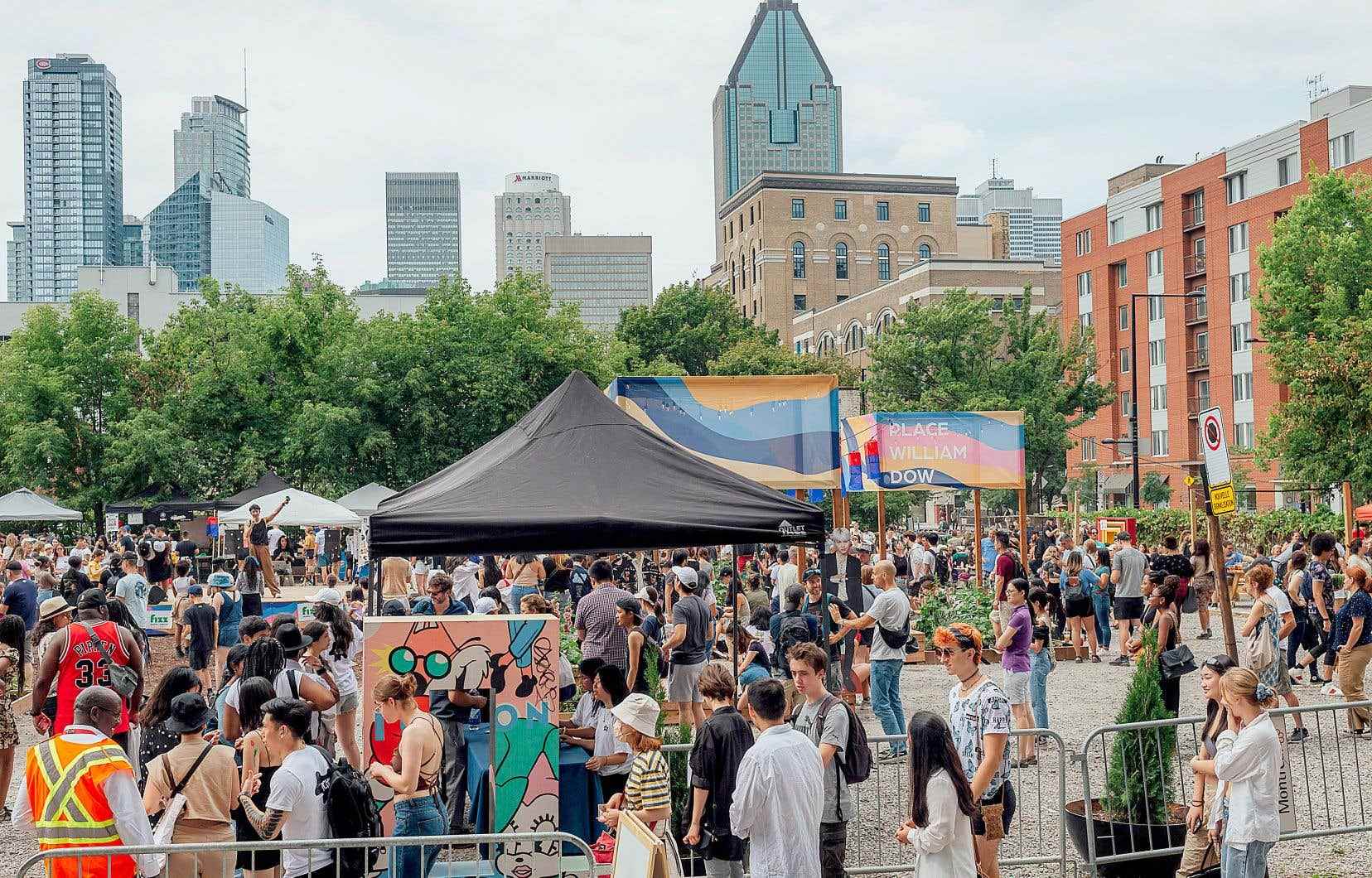Last weekend, Place William-Dow in the new Cultural Corridor of Griffintown, in Montreal, hosted the POCHA MTL event around Korean cuisine and culture, which are increasingly popular around the world. Sudbest is adding to it this weekend with three days of programming in three other locations in the Southwest, namely Sir-George-Étienne-Cartier Park, the North Link (behind the Arsenal Contemporary Art Center) and the Atwater Market.
After this great coup, the Alley Arts Festival will deploy its sixth edition of short professional artistic performances. Circus, dance and music performances will be presented outdoors from Monday, August 29 to Sunday, September 11 in the alleys of several boroughs of the metropolis, from Ahuntsic to Rosemont or Anjou.
The ephemeral thus settles permanently in Montreal, as in many other cities. From temporary public squares to summer pedestrianized streets and open-air gastronomy, temporary urban developments are popular. The site What to do in Montreal lists about fifteen such events, ranging from the Village at Pied-du-Courant to the Jardin de la Pépinière, or from the farmer’s market in the Plateau to the network of summer co-working islands.
MR-63 is at the center of the movement by mixing the temporary and the permanent. The cultural organization made a name for itself by recovering and reusing a few old blue MR-63 cars from the Montreal metro. Four of them served as central pieces in the development of Station F-MR in the summer of 2018, at the Place des Bassins of the Lachine Canal National Historic Site. The site featured multidisciplinary cultural programming and local produce markets, around 350 activities in total that attracted 80,000 people over four months.
“It was our biggest deployment to date,” says Frédéric Morin-Bordeleau, co-founder and CEO of MR-63. The organization installed a first ephemeral park at Place William-Dow in 2019 and maintained programming during the pandemic, in particular with Sundays ephemeral.
Cultural Corridor
MR-63 continues its momentum this year with the bold new Cultural Corridor project. This route of arts and culture, experienced briefly a decade ago by Caroline Andrieux, founder of the Darling Foundry, is coming back to life after a long dormancy. The Corridor extends over 3.6 kilometers near the Lachine Canal, linking 18 places of creation and dissemination, from the Darling Foundry to the Division gallery and from the Phi Center to 1700 La Poste, via Place William- Dow, of course.
“The urban axis connects places of culture and a collection of public works of art, says Paul Hugo Baptiste, director of the Cultural Corridor, guiding us by bike along the route. In the longer term, we want to install strong signage. MR-63 adds events on this route. The response is very positive. We propose a unifying vision that respects individual identities. »
The project makes all the more sense in that it ties in with the restructuring of spaces in this portion of Montreal, a transformation undertaken more than three decades ago with the enhancement of the industrial heritage around the canal, the creation of the Cité du multimedia and the countless constructions in the Griffintown district.
Professor Alice Covatta, from the UdeM School of Architecture, a specialist in compact and densified urban spaces, distinguishes between two types of temporary development: spaces that are quickly set up and taken down after a few weeks and transitional places occupied while waiting for a permanent installation. This is the case of Place William-Dow, which belongs to the City and which will be redeveloped into an urban park in the coming years, again using the old MR-63 cars.
“Both ways of doing things are interesting,” notes Professor Covatta. The first, for example, gives the streets pedestrianized in the summer, during the pandemic, to help trade. COVID-19 has accelerated processes. Ephemeral spaces can also stimulate the creativity of architects, urban planners and other stakeholders. »
Celebration and leisure converge on these places. The festive result is opposed to working time while often being part of general economic activity. The result shows a society entertaining and consuming in harmony.
The festival mode that dominates in Quebec is part of time and territory. It becomes a cyclical and ritualized rendezvous that inhabits and transforms urban spaces. The biggest festivals (such as the International Jazz Festival in Montreal) permanently shape and appropriate the public space. Others, more modest, like the activities of the next few days in the Southwest, accommodate flexible and temporary occupations.
“Cultural events allow you to quickly become attached to a district. This is very important for a very mobile and multicultural community like that of Montreal,” says the professor.
